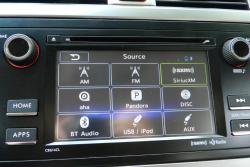 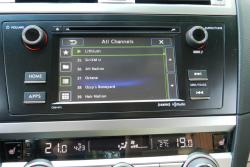 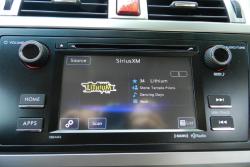 Subaru Starlink media sources list, satellite radio channel list, playback display. Click image to enlarge |
Volume and seek are also found on the left-hand spoke of the steering wheel, as is the source button. That’s handy, because to access the list of sources on the touchscreen you first have to hit the “source” button on the touchscreen – you can’t simply click the tab or icon for the source you want as you can in some cars. Telephony controls and voice command buttons are also on the steering wheel, and the voice commands are incredibly intuitive. You can also override the explanations and tutoring given by the system and input information quicker by pressing the voice button and speaking.
The seek button on the wheel scrolls presets if pressed once, and seeks the next channel if held for a second.
By putting functions like “source” under its own subpage, Subaru has increased a level to the system that some won’t like, but it has also allowed them to make the icons larger, and therefore easier to access while driving.
Navigation
The navigation system has fairly simple map graphics, but Subaru has done an excellent job of cleaning up the display for the important thing. On the main screen without guidance, the zoom buttons are large and well-separated, with the menu button also easy to get to.
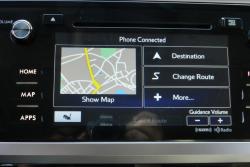 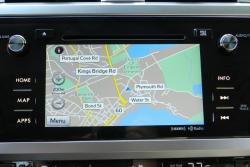 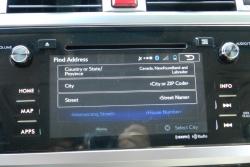 Subaru Starlink navigation menu, map view, address input. Click image to enlarge |
Inside the main menu, the main functions, traffic information and destination, are given priority with secondary commands under another submenu accessed by the “More” button.
Inputting addresses is easy, but is touchscreen keyboard only.
Advancements
Where previously the back-up camera image was projected into the screen found in the pod atop the dashboard, now it is displayed in the main touchscreen. The result is a far larger and crisper image when reversing.
The vehicle displays that used to be housed in the pod on top of the dash is now moved to a TFT in the instrument cluster. It provides a better hand-eye link between the steering-wheel mounted information buttons and the screen itself, which is particularly useful for new users of the system.
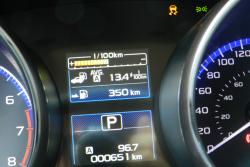 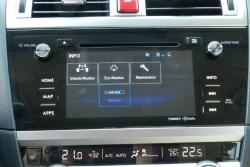 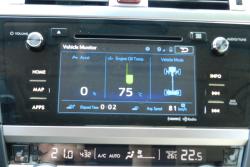 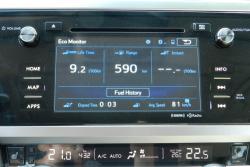 Subaru instrument cluster trip computer, Subaru Starlink Info, Vehicle Monitor, Eco Monitor. Click image to enlarge |
On the two higher trims, the larger, more interactive vehicle displays like real-time torque distribution, eco-monitor and maintenance information are now found under Info on the seven-inch screen’s Home menu. These are better-quality images, larger, and in the main viewing screen.
The new system has larger touchscreen buttons and better button controls for less-distracting experience.
It’s sometimes hard to really pinpoint exactly how an HMI and infotainment system is different from any other – on paper they have the same or similar functions, and the general approach to operation is often very similar. But when you have a case like this one, where the difference between the old and the new is so stark, it becomes clear how much a good system can enhance the appeal of a car.











